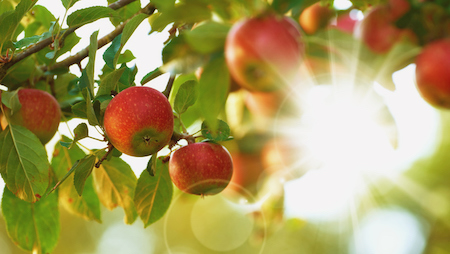Farmer’s markets are nice, but the surest way to crisp apples or sweet, juicy peaches is growing your own to harvest at the peak of ripeness. Fortunately, fruit trees are easy to grow in nearly every climate, even for novice gardeners, providing color, shade and beauty to any backyard, as well as luscious fruit for your family.
Check with local gardening retailers for tips on which varieties of fruit thrive best in your area, and focus on the following to keep your trees healthy and productive:
Choice
You can grow healthy fruit trees from seed, but you’ll save some time and work by selecting fruit trees in containers, bare root, balled or burlapped, depending on the time of year you buy them and where you shop.
Sunlight
Choose a sunny spot for planting. Most fruit trees need at least six hours of direct sunlight per day during their growing season. If you are planting more than one fruit tree in the same location, be sure they do not crowd one another and steal sunlight and nutrients.
Irrigation
To yield fruit that is large and tasty, your tree requires ample water on a regular basis, especially during growing season. Apply enough water to moisten the root zone at least six inches deep, and develop a long-term watering schedule adapted to your local area as recommended by your retailer.
Pruning
Most trees establish their shape in the first three years of growth, so prune regularly to promote growth, maintain structure and control height. Remove any broken wood or branches, and pinch off any budding fruit that appears to be misshapen or damaged.
Insect and Pest Control
If there is a downside to growing fruit trees, it’s that you will deal, at one time or another, with insects eating the leaves or birds getting to the fruit before you do. A forceful spray of water from a garden hose may knock down invading insects, or you can use the least toxic insecticidal soap available to clear out pests such as aphids and spider mites. If birds are a problem, throw netting over your tree once the buds start turning into fruit.











